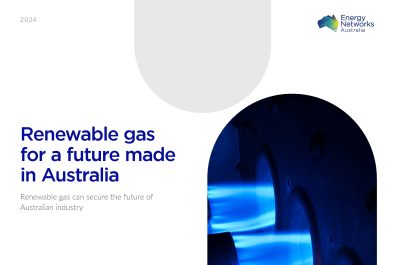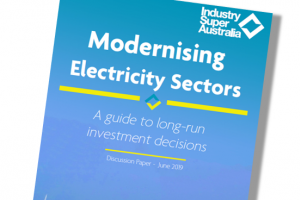Emission Mission: Powering change in the national energy objectives
On 19 May, Australia’s Energy Ministers approved amendments to the national energy laws. For the first time an emissions reduction objective will be incorporated into the national energy objectives.[i]
We look at the road from here, including how it will be achieved and the key steps needed to ensure smooth implementation of this fundamental change to our energy laws, as explored in a recently released Information Paper.[ii]
Incorporating an emissions reduction objective
The national electricity objective and national gas objective (referred to collectively as the ‘national energy objectives’ alongside the related national energy retail objective) govern and guide market bodies such as the Australian Energy Market Commission (AEMC) and Australian Energy Regulator (AER) in their activities under energy law. Since the development of the National Electricity Market, there has been sustained debate over whether the regime should incorporate additional environmental focused objectives.
In a positive first step under the new National Energy Transformation Partnership, Energy Ministers across Australia agreed in 2022[iii] to integrate an emissions reduction component into the energy law objectives.
The Government’s prior consultation on the proposed changes at the end of last year asked stakeholders key questions such as:
- should the emissions reduction objective be incorporated into the existing economic efficiency framework governing the energy regime
- what kind of reference to Australia’s greenhouse gas emissions reductions targets is appropriate
- what recognition of the interactions between electricity and gas markets is needed
- how or whether the amended objectives should apply to regulatory processes already underway
- whether further consequential changes were needed to the detailed Rules framework to give effect to the proposed changes.
What has been decided?
While the final draft legislation is yet to be publicly released, the recently released Information Paper highlights some decisions that have been made to the final legislative package.
Energy Ministers have retained the existing economic efficiency framework. This avoids uncertainty and is based on stakeholder support for its continuation. Incorporating the emissions reduction component into the existing economic efficiency framework will allow for balanced, well understood decision making.
The proposed drafting of the emissions reduction objective will be revised to refer to ‘the achievement of targets set by a participating jurisdiction for reducing Australia’s greenhouse gas emissions or that are likely to contribute to reducing Australia’s greenhouse gas emissions.’
This higher-level drafting of the emissions objective will be complemented by a requirement that the AEMC must prepare and maintain a list of published targets. These targets must, at a minimum, be considered by all market bodies (where relevant) in applying the objective. This will mean future energy decisions will be explicitly informed by published emissions targets over time.
Importantly, including the words ‘or that are likely to contribute to’ retains the Energy Ministers’ intent that other kinds of targets that contribute to the goal of emissions reduction, such as electric vehicle targets, could also be considered.
The proposed amendment to adopt the ‘consumers of energy’ change will not be progressed. There was broad support for the holistic consideration of consumers of energy. However, the Information Paper noted stakeholders’ concerns about unintended consequences and a potential increase in the ambiguity and complexity of market bodies’ decision-making if ‘consumers of electricity’ and ‘consumers of gas’ in the electricity and gas objectives respectively were replaced with ‘consumers of energy’.
The final package will retain the broad discretion given to energy market bodies to determine whether to apply the amended objectives to processes already underway. In the interests of maximising early outcomes from the reform, the final amendments will include specific targeted transitional arrangements that will require the AER to apply the amended objectives to the electricity network determinations underway for the 2024‑29 period.
Promoting early implementation of the amended objectives will ensure that market bodies, consumers and industry can work collaboratively together to give effect to governments’ commitment to achieve a decarbonised, modern and reliable energy grid.
The final package of reforms also allows for the development of a value of carbon emissions methodology to help implement the emissions reduction objective in the national energy objectives. This will be an important market wide setting and signal, and much remains to be filled out about how and by whom it will be set.
Following through on the law changes
There is an immediate need for consequential rule changes to ensure that market bodies can fully reflect the proposed policy intent of the legislative reform when making energy regulatory decisions. Without these rule changes, there are likely to be some important decisions where the impact of the changes to the national energy objectives could be unintentionally muted.
The Information Paper recognises this and confirms that Energy Ministers have tasked their senior officials to prepare and submit priority rule change requests on their behalf related to forecast expenditure and investment planning.
Energy networks strongly support the timely consideration of the consequential rule change requests and look forward to collaborating closely with market bodies, consumers, and stakeholders to ensure a fit for purpose implementation of this positive and significant reform.
[i] Energy and Climate Change Ministerial Council – Energy Ministers Sub-Group, Meeting Communique: Friday 19 May 2023.
[ii] Incorporating an emissions reduction objective into the national energy objectives: Information Paper, May 2023 (published on 6 June 2023).
[iii] Energy Ministers, National Energy Transformation Partnership, August 2022.


